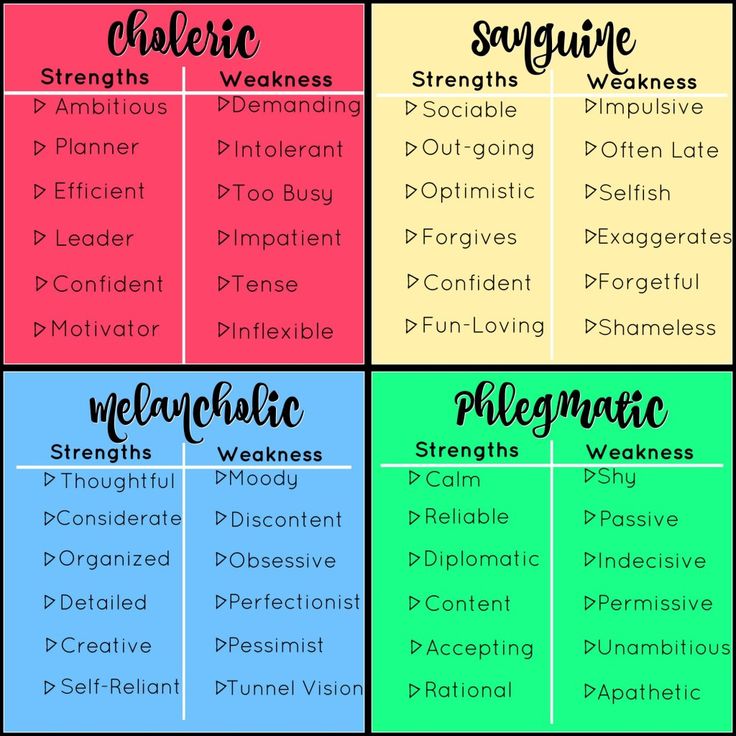Traumatic reenactment example
A Helpful Way to Conceptualize and Understand Reenactments
J Psychother Pract Res. 1998 Summer; 7(3): 227–235.
PMCID: PMC3330499
PMID: 9631344
Author information Copyright and License information Disclaimer
Attempts to understand the purpose and the etiology of reenactments can lead to confusion because reenactments can occur for a variety of reasons. At times, individuals actively reenact past traumas as a way to master them. However, in other cases, reenactments occur inadvertently and result from the psychological vulnerabilities and defensive strategies characteristic of trauma survivors. This article offers a means to conceptualize and understand the many ways in which reenactments can occur. Psychotherapeutic strategies are offered to help individuals integrate past traumas and decrease their chances of becoming involved in destructive reenactments.(The Journal of Psychotherapy Practice and Research 1998; 7:227–235)
Victims of trauma often experience a wide range of psychiatric symptoms, including intrusive recollections of the trauma, numbing and avoidance of stimuli associated with it, anxiety, hypervigilance, and other symptoms indicative of increased arousal. 1–3 Many individuals re-create and repetitively relive the trauma in their present lives.1–6 These phenomena have been called reenactments.5 For example, it has been found that women who were sexually abused as children are more likely to be sexually or physically abused in their marriages.7 It has been noted that traumatized individuals seem to have an addiction to trauma.8 A number of researchers have observed that retraumatization and revictimization of people who have experienced trauma, especially trauma in childhood, are all too common phenomena.7,9,10
Several ideas have been suggested to explain the phenomenon of reenactments. Some conceive reenactments as spontaneous behavioral repetitions of past traumatic events that have never been verbalized or even remembered.11,12 Patients may express their internal states through physical action rather than with words. 13,14 Freud15 noted that individuals who do not remember past traumatic events are “obliged to repeat the repressed material as a contemporary experience, instead of . . . remembering it as something belonging to the past” (p. 12). He further hypothesized that the obligatory repetition of painful situations from one's past may result from the death instinct or “an urge inherent in organic life to restore an earlier state of things” (p. 30). Indeed, it has been noted that the compulsion to repeat may have an almost biological urgency.11 Others suggest that reenactments result from the psychological vulnerabilities characteristic of trauma survivors.5,7,14,16 As a result of a range of ego deficits and poor coping strategies, trauma survivors can become easy prey for victimizers. Other writers understand reenactments as a means of achieving mastery: a traumatized individual reenacts a trauma in order to remember, assimilate, integrate, and heal from the traumatic experience.
13,14 Freud15 noted that individuals who do not remember past traumatic events are “obliged to repeat the repressed material as a contemporary experience, instead of . . . remembering it as something belonging to the past” (p. 12). He further hypothesized that the obligatory repetition of painful situations from one's past may result from the death instinct or “an urge inherent in organic life to restore an earlier state of things” (p. 30). Indeed, it has been noted that the compulsion to repeat may have an almost biological urgency.11 Others suggest that reenactments result from the psychological vulnerabilities characteristic of trauma survivors.5,7,14,16 As a result of a range of ego deficits and poor coping strategies, trauma survivors can become easy prey for victimizers. Other writers understand reenactments as a means of achieving mastery: a traumatized individual reenacts a trauma in order to remember, assimilate, integrate, and heal from the traumatic experience. 1,12,17,18
1,12,17,18
A definitive understanding of reenactments and the function they serve remains elusive. Herman5 has written that there is something uncanny about reenactments. While they often appear to be consciously chosen, they have a quality of involuntariness. In addition, although it has been theorized that reenacting a past trauma is a way an individual attempts to master it, lifelong reenactments and reexposure to trauma rarely result in resolution and mastery.8,17 Understanding and addressing the fact that traumatized people typically lead traumatizing lives remains a great challenge.6
Reenactments can arise from very different underlying dynamics and can result in vastly different outcomes. Thus, an understanding of the purpose of reenactments must be multidimensional. A conceptualization and understanding of the many different ways in which reenactments can occur will also help to shed light on why traumatized individuals often do not achieve mastery and will help to organize and focus clinical intervention.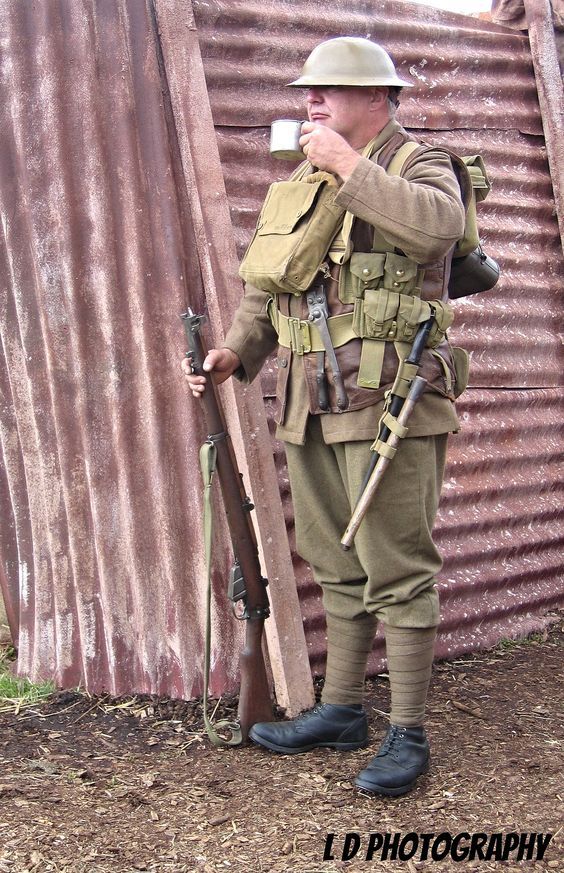
In this article I have broken down reenactments into four general categories. In the first, reenacting as an attempt to achieve mastery, individuals more actively reenact a traumatic situation from their past. Some of these efforts are adaptive resolutions of earlier traumas; others, however, are reflective of a maladaptive process and can lead to continued revictimization and difficulties. In the other three types of reenactments, I suggest that reenactments occur in inadvertent and unintentional ways. In reenactments caused by rigidified defenses, defenses lead to reenactments and to the problems that the original defenses sought to avoid. With reenactments caused by affective dysregulation and cognitive reactions, these intense affective and cognitive reactions get responded to by other people, which can lead to a reenactment. Finally, with reenactments caused by ego deficits, trauma survivors' psychological vulnerabilities can lead to reenactments and revictimization. This classification admittedly is somewhat artificial, since elements from several categories often play a role in the manifestation of a particular reenactment.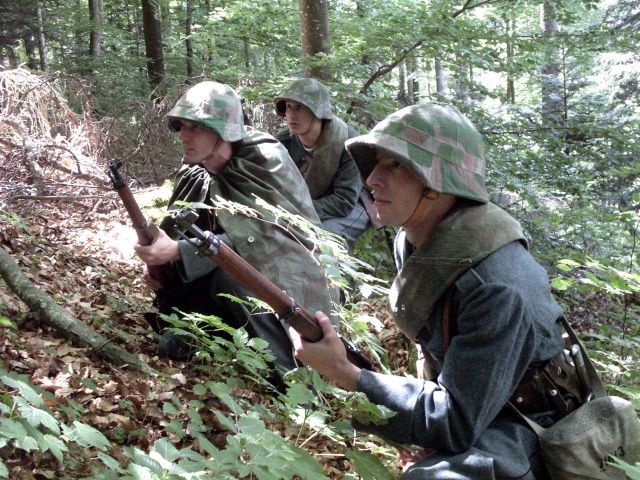 The categories are not all-inclusive, and there are other ways to conceptualize reenactments. However, this breakdown illustrates the various ways that reenactments can evolve.
The categories are not all-inclusive, and there are other ways to conceptualize reenactments. However, this breakdown illustrates the various ways that reenactments can evolve.
Individuals may actively reenact elements of a past traumatic experience as a way to cope with and master it. At times, the attempt is an adaptive process that facilitates the successful resolution and working through of the earlier trauma. In other cases, however, the effort to master the trauma is a maladaptive mechanism and the strategy results in continued distress and difficulties for the individual.
The distinction between adaptation and maladaptation can be difficult to make, since all coping mechanisms are inward struggles to adapt to life and to master its challenges.19 In addition, because trauma can affect many spheres of functioning, the individual may have adaptively mastered certain aspects of the trauma, but in other areas the resolution may be less than adequate. For example, Peck20 described an individual who was violently beaten as a child and who adaptively mastered this trauma by becoming a homicide detective and having a driven search for crime. However, despite his effective mastery in the vocational realm, his intimate relationships were marked by competitiveness, detachment, and underlying terror.
However, despite his effective mastery in the vocational realm, his intimate relationships were marked by competitiveness, detachment, and underlying terror.
Notwithstanding this difficulty, adaptation can be distinguished from maladaptation in that adaptive responses are characterized by a more flexible coping style, they are motivated more by the present and future than by the past, and they make use of secondary process thinking.19,21 In addition, with adaptation, emotions stemming from the past are less overwhelming and destabilizing, and overgeneralized negative schemas about self and others have been altered.22,23 As Pine24 has noted, these adaptive changes enable the person “to respond to the present free of the categories of experiencing laid down in the past” (p. 175).
Reenacting Indicative of AdaptationIt has been suggested that actively reenacting a past trauma can provide an opportunity for an individual to integrate and work through the terror, helplessness, and other feelings and beliefs surrounding the original trauma.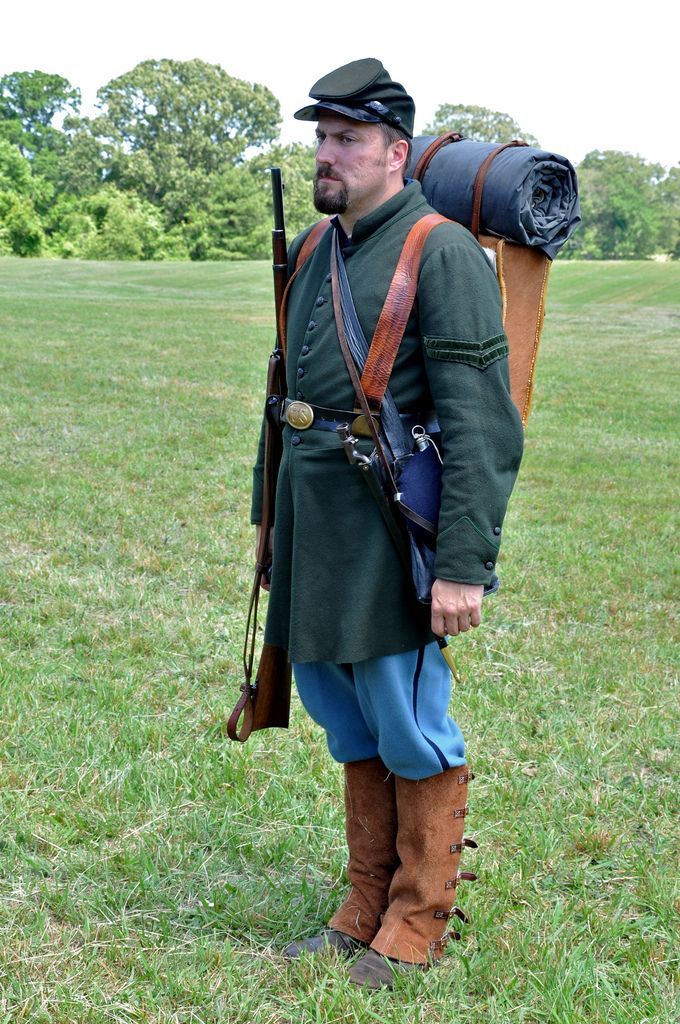 1,12,17,18 Freud posited that mastery could be achieved by actively repeating a past uncontrollable and unpleasurable experience.15 Control can slowly be reestablished by repeatedly experiencing what once had to be endured.21,25 For example, a woman who was sexually abused as a child and who, as a result, was terrified of physical contact involved herself in massage therapy training. Placing herself in a situation reminiscent of her past trauma and exploring her massage therapy experiences in psychotherapy enabled her to work through her overwhelming affect related to her past sexual abuse and diminished her fear of physical contact. We can also see this process in normal grief work: reexperiencing the feelings of grief, telling stories about a lost loved one, and repeatedly confronting every element of the loss until the intensity of the distress has remitted can enable the individual to assimilate the event and to work through the feelings surrounding the trauma.
1,12,17,18 Freud posited that mastery could be achieved by actively repeating a past uncontrollable and unpleasurable experience.15 Control can slowly be reestablished by repeatedly experiencing what once had to be endured.21,25 For example, a woman who was sexually abused as a child and who, as a result, was terrified of physical contact involved herself in massage therapy training. Placing herself in a situation reminiscent of her past trauma and exploring her massage therapy experiences in psychotherapy enabled her to work through her overwhelming affect related to her past sexual abuse and diminished her fear of physical contact. We can also see this process in normal grief work: reexperiencing the feelings of grief, telling stories about a lost loved one, and repeatedly confronting every element of the loss until the intensity of the distress has remitted can enable the individual to assimilate the event and to work through the feelings surrounding the trauma.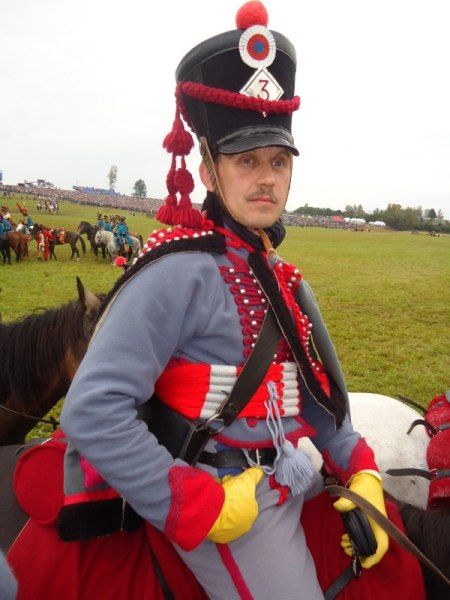 26
26
Psychotherapy can also help individuals to more fully work through and effectively master a previous trauma. With the adjunct of therapy and the benefit of insight, the detective mentioned earlier20 who adaptively coped with past physical abuse by becoming a detective and taking on highly risky situations began to exercise better judgment and no longer felt as strongly compelled to take on situations involving physical risk.
Reenacting Indicative of MaladaptationIn many cases, actively reenacting a past trauma can be more reflective of a maladaptive defensive posture than an adaptive process. For example, many childhood victims of sexual abuse become abusers of others.27,28 In these cases, reenacting past abuse by becoming an active abuser is a defensive stance that ensures that the terror and helplessness related to the old traumatic situation or relationship do not get reexperienced. In addition, the abusive act allows the individual to express and direct rage at others. This way of being in the world is an attempt to master the previous trauma, but it is a maladaptive one because it does not result in a reworking and integration of the individual's traumatic past and it victimizes others in the process.
This way of being in the world is an attempt to master the previous trauma, but it is a maladaptive one because it does not result in a reworking and integration of the individual's traumatic past and it victimizes others in the process.
Childhood sexual abuse has also been linked to prostitution in adulthood.29,30 Chu17 describes a woman who explained her prostitution as a way to control men through sex and as an attempt to have active control of a previously passively experienced victimization. Although this has explanatory value, it is a maladaptive resolution of the earlier sexual abuse. The woman is now controlling rather than being controlled, but the old drama of past object relations is still being played out in the present. An adaptive mastery of the earlier conflict has not been achieved; men are still feared, they still need to be controlled, and revictimization often continues to occur.
An individual may also seek out a person who is like a past abuser and reenact a past traumatic relationship out of a need to change the other person in order to feel better about herself.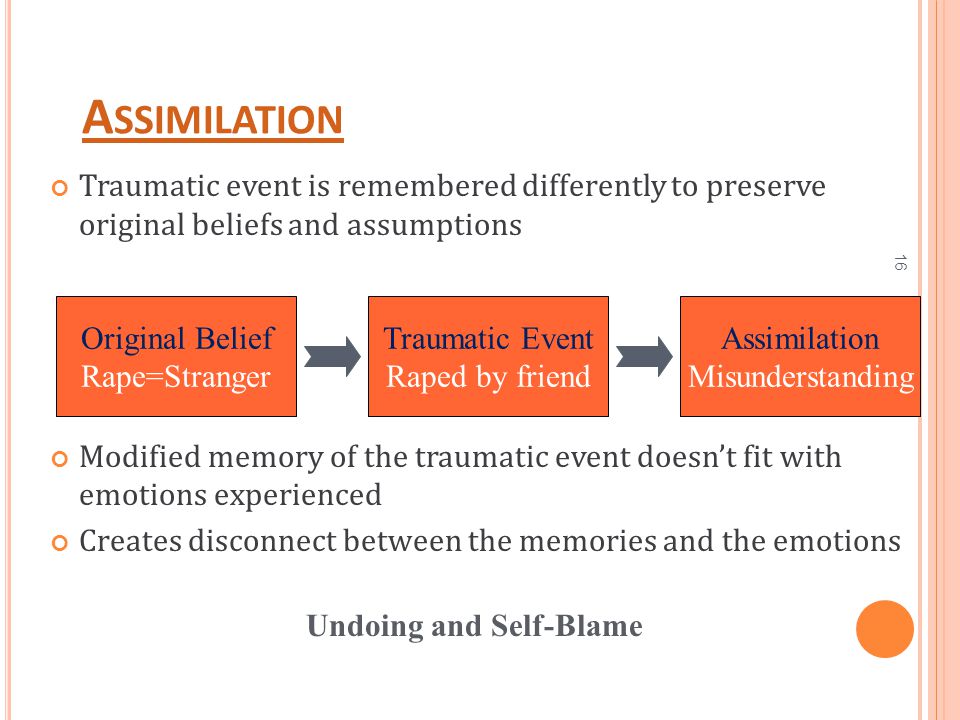 For example, a woman who was abused by her father and who blamed herself for this found herself in a relationship with an abusive man. The woman's unconscious attraction to this person was rooted in a desire to get him to treat her well, which, if successful, would have ameliorated her feelings of self-blame and badness. She never succeeded, however, and a reenactment occurred. Although her effort was an attempt to master an earlier conflict, it was a maladaptive one: she continued to be involved in a destructive relationship where her needs were never met.
For example, a woman who was abused by her father and who blamed herself for this found herself in a relationship with an abusive man. The woman's unconscious attraction to this person was rooted in a desire to get him to treat her well, which, if successful, would have ameliorated her feelings of self-blame and badness. She never succeeded, however, and a reenactment occurred. Although her effort was an attempt to master an earlier conflict, it was a maladaptive one: she continued to be involved in a destructive relationship where her needs were never met.
Trauma survivors may also be drawn to establish relationships that are similar to past significant relationships because there is comfort in familiarity. For example, a man who was emotionally abused by his aloof, distant mother ends up in a relationship with a woman with similar traits. Another woman who was sexually abused by her father and brothers acts in sexually provocative ways with others. It has been found that when animals are hyperaroused, they tend to avoid novelty and perseverate in familiar behavior regardless of the outcome. However, in states of low arousal they seek novelty and are curious.31 For many victims of childhood abuse, dealing with other people on an intimate basis is a high-arousal state because past relationships have been marked by terror, anxiety, and fear. As a result, when establishing relationships, they avoid novelty and form relationships that, even if destructive, are similar to past ones. Maladaptive reenactments can also occur because a person seeks out and “chooses” a powerful, caretaking (and sometimes abusive) figure to solidify a shaky self-concept and a fragile sense of self.5,16,23 In addition, survivors of childhood abuse who suffer from self-hatred, an internal sense of badness, and a sense that they deserve mistreatment may gravitate to others who resonate with this negative self-concept, and past experience can then be recapitulated.17
However, in states of low arousal they seek novelty and are curious.31 For many victims of childhood abuse, dealing with other people on an intimate basis is a high-arousal state because past relationships have been marked by terror, anxiety, and fear. As a result, when establishing relationships, they avoid novelty and form relationships that, even if destructive, are similar to past ones. Maladaptive reenactments can also occur because a person seeks out and “chooses” a powerful, caretaking (and sometimes abusive) figure to solidify a shaky self-concept and a fragile sense of self.5,16,23 In addition, survivors of childhood abuse who suffer from self-hatred, an internal sense of badness, and a sense that they deserve mistreatment may gravitate to others who resonate with this negative self-concept, and past experience can then be recapitulated.17
As suggested above, individuals for various reasons often actively reenact elements of past traumatic relationships. However, even when there is no active reenactment of a past trauma, a person's defensive armor and rigid way of defending against the reexperiencing of traumatic affect can inadvertently lead to a reenactment. As Krystal32 has noted, “Among the direct effects of severe childhood trauma in adults is a lifelong dread of the return of the traumatic state and the expectation of it” (p. 147). People learn how to avoid their ultimate dread through rigid characterological changes,14 which are the mental “fingerprints” of who they are. Unfortunately, inflexible and rigid defenses can lead to the very problems that the original defenses attempted to avoid.
However, even when there is no active reenactment of a past trauma, a person's defensive armor and rigid way of defending against the reexperiencing of traumatic affect can inadvertently lead to a reenactment. As Krystal32 has noted, “Among the direct effects of severe childhood trauma in adults is a lifelong dread of the return of the traumatic state and the expectation of it” (p. 147). People learn how to avoid their ultimate dread through rigid characterological changes,14 which are the mental “fingerprints” of who they are. Unfortunately, inflexible and rigid defenses can lead to the very problems that the original defenses attempted to avoid.
As an example, a man who was constantly preoccupied with abandonment because his mother abandoned him and his family when he was a young boy continued to be plagued by unresolved dependency concerns. To ensure that he was never again abandoned, he developed extremely possessive and clinging relationships with women. Since the man was so suffocating, women typically left him, and he reexperienced the pain of abandonment again and again. Through his own behavior, which was designed to prevent loss, abandonment, and terror, he inadvertently caused a reenactment to occur. Another woman who had a rejecting relationship with her father coped with her fear of again being rejected by establishing relationships with “losers” she did not really love. Although these “losers” did not meet her emotional needs, which was a reenactment of her past relationship with her father, she avoided her greatest fear, namely rejection by someone whom she truly loved. In these cases, reenactments occurred in paradoxical ways: through efforts to avoid an overwhelming, disintegrating state of trauma, these individuals made decisions and choices that backfired and led, after all, to reenactments.
Since the man was so suffocating, women typically left him, and he reexperienced the pain of abandonment again and again. Through his own behavior, which was designed to prevent loss, abandonment, and terror, he inadvertently caused a reenactment to occur. Another woman who had a rejecting relationship with her father coped with her fear of again being rejected by establishing relationships with “losers” she did not really love. Although these “losers” did not meet her emotional needs, which was a reenactment of her past relationship with her father, she avoided her greatest fear, namely rejection by someone whom she truly loved. In these cases, reenactments occurred in paradoxical ways: through efforts to avoid an overwhelming, disintegrating state of trauma, these individuals made decisions and choices that backfired and led, after all, to reenactments.
Trauma survivors who have not integrated past feelings surrounding the trauma can become flooded and overwhelmed by them.33 Intense anger, disappointment, and fear can be triggered in interpersonal relationships, and the present situation can be perceived and responded to in the same way as the old trauma. 5,14 For example, a man who had not worked through his parents' neglect of him became flooded with rage, hurt, and disappointment when a friend failed to return a phone call. The man understood this omission as proof that he was not cared about, which was a reenactment of his earlier relationship with his parents. The man then withdrew from his friend, which further re-created his isolation and loneliness.
5,14 For example, a man who had not worked through his parents' neglect of him became flooded with rage, hurt, and disappointment when a friend failed to return a phone call. The man understood this omission as proof that he was not cared about, which was a reenactment of his earlier relationship with his parents. The man then withdrew from his friend, which further re-created his isolation and loneliness.
Reenactments may also occur when an individual reexperiences and expresses intense feelings from the past that are then reacted to by another. For example, a woman who was physically abused by her father when she was a child continued to feel rage and anger. Her father also used to criticize her, which made her feel worthless. As well as having a fragile self-esteem and extreme sensitivity to criticism, this woman often perceived harsh criticism even when it had not been expressed. In her current relationships with men, when she received any criticism she overreacted and reexperienced her rage, which she expressed in vicious and hostile ways. Not only did this frequently cause her relationships to end in fights, but often the verbal fights would turn physical and the woman would again be abused.
Not only did this frequently cause her relationships to end in fights, but often the verbal fights would turn physical and the woman would again be abused.
Individuals can also reexperience and subsequently become overwhelmed by fear that has never been integrated. When they encounter a threatening situation, trauma survivors may reexperience their old, unresolved feelings of terror and helplessness. These feelings will then overwhelm their psyches and prevent them from taking appropriate action, thus leading to a reenactment and revictimization.5,17
Understanding reenactments in this fashion should not be construed as imposing blame on trauma survivors for their victimization. There can be no justification for the abuse of others, and victimizers must always take responsibility for their actions. These examples are offered to demonstrate that in select situations, depending on who is encountered and what defenses are put into use, a reenactment can develop when unresolved feelings and beliefs resulting from past traumatization are reexperienced in the present.
Although methodological and research problems arise in attempting to ascertain the long-term effects of childhood abuse, there appear to be many associated long-term psychological effects. These long-term effects typically include depression and low self-esteem, drug and alcohol abuse, self-abusive behavior, anxiety, learning difficulties, impaired interpersonal relationships including an inability to trust others, identity disturbances, and helplessness.10,34 Again without blame to the trauma survivor, early childhood abuse can lead to ego deficits that render an individual susceptible to both reenactments and repeated revictimization. For example, a woman who developed poor self-esteem and identity disturbances as a result of having been raised in an abusive childhood environment found herself unable to leave an abusive relationship. On many levels, she lacked the internal resources to separate herself from her abusive partner. The difficulty she had in trusting others also prevented her from turning to others to obtain the help she so badly required. The learned helplessness model also played a role in her tolerance for the abuse, since she believed that nothing could be done about it anyway. Another trauma survivor's alcohol and drug use resulted in a reenactment and revictimization when, under the influence of alcohol or drugs, she was victimized due to impaired judgment and loss of consciousness.
The learned helplessness model also played a role in her tolerance for the abuse, since she believed that nothing could be done about it anyway. Another trauma survivor's alcohol and drug use resulted in a reenactment and revictimization when, under the influence of alcohol or drugs, she was victimized due to impaired judgment and loss of consciousness.
Deep-seated disturbances in identity, self-concept, and security in the world can also render individuals vulnerable to being enticed by others who resonate with and counter these ego deficits. Because of early trauma, a person can feel helpless, fragile, and out of control. In turn, the person may be extremely susceptible to anyone who can take control, who can gratify dependency needs, and who can elegantly counter the individual's extreme sense of powerlessness, insecurity, and vulnerability.5 In this regard, Kluft16 has discussed incest survivors who became sexually victimized by their therapists.
Another factor that can contribute to the frequent reenactments of trauma survivors is the use of dissociative defenses.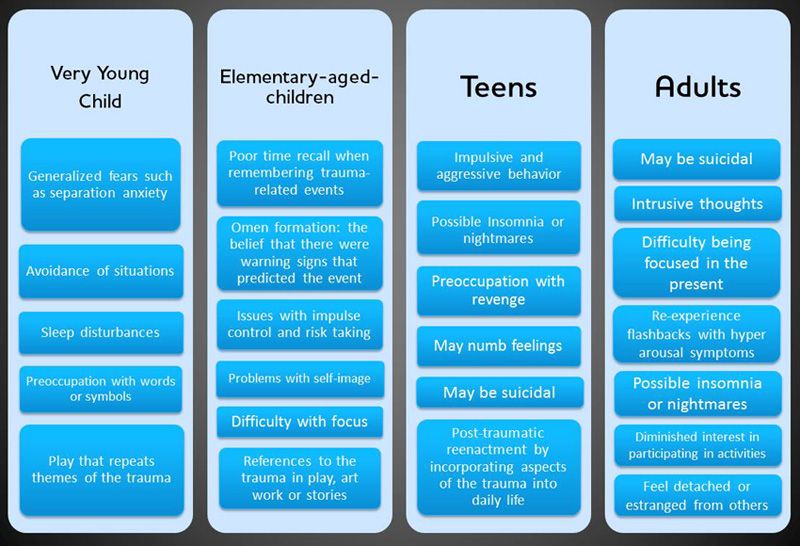 5,16 Trauma survivors often tolerate mistreatment and abuse because of their habitual use of this defensive style. Whether it is physical abuse, abusive remarks, emotional neglect, or a partner's drinking or drug use, individuals with a history of trauma seem to minimize, block out, not see, and tolerate such abuse. Although this may have an adaptive value since it allows the person to tolerate the situation, simultaneously it will inhibit appropriate action, and past abuse may be reenacted.
5,16 Trauma survivors often tolerate mistreatment and abuse because of their habitual use of this defensive style. Whether it is physical abuse, abusive remarks, emotional neglect, or a partner's drinking or drug use, individuals with a history of trauma seem to minimize, block out, not see, and tolerate such abuse. Although this may have an adaptive value since it allows the person to tolerate the situation, simultaneously it will inhibit appropriate action, and past abuse may be reenacted.
Ongoing reenactments are a reflection that a patient is continuing to act in stuck and rigidified ways. In addition, reenactments often lead to revictimization and related feelings of shame, helplessness, and hopelessness. Consequently, an important goal of treatment is facilitating an understanding and control of reenactments. Reenactments are caused in part by powerful unconscious forces that must eventually be verbalized and understood. Thus, in order to address reenactments and to break their repetitiveness, the therapist should help the individual to understand why they occur.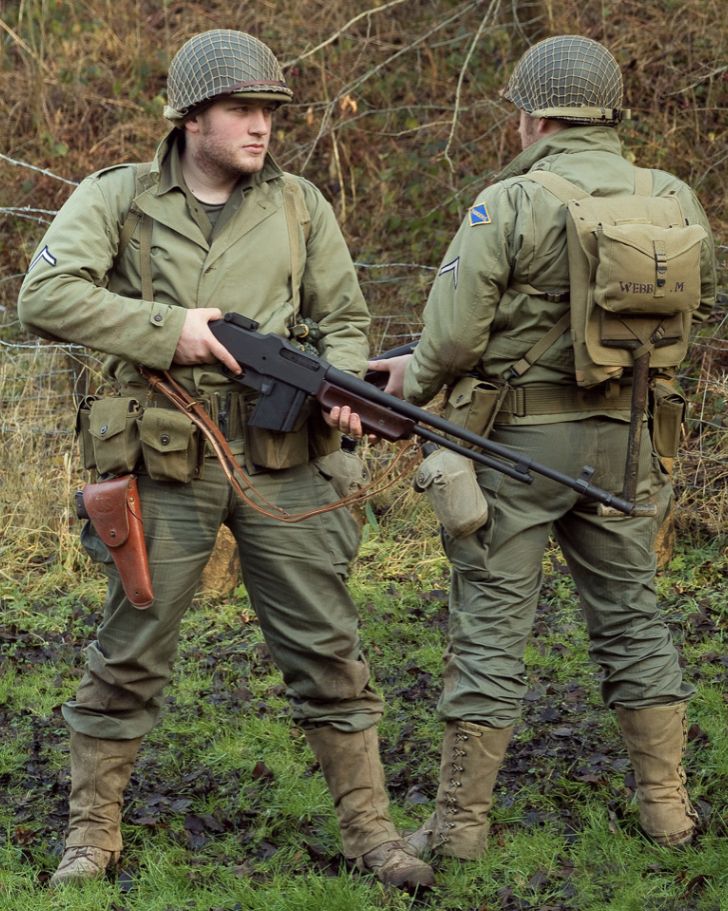 However, before proceeding into this phase of treatment and exploring past traumatic relationships and experiences, the therapist must first have achieved a strong and solid therapeutic alliance with the patient.35 In addition, the patient's safety must be firmly established, and any acute problem areas, such as chemical abuse problems or ongoing self-destructive behavior, need to be stabilized.5 Once these issues have been resolved, exploratory therapy may begin.
However, before proceeding into this phase of treatment and exploring past traumatic relationships and experiences, the therapist must first have achieved a strong and solid therapeutic alliance with the patient.35 In addition, the patient's safety must be firmly established, and any acute problem areas, such as chemical abuse problems or ongoing self-destructive behavior, need to be stabilized.5 Once these issues have been resolved, exploratory therapy may begin.
As the patient becomes aware that a pattern of dysfunction is evident, the therapist can suggest that it might be useful to try to understand this. Using as a framework the categories of reenactments that have just been discussed, the therapist can explore which of them could be playing a role in a particular patient's reenactment. It will generally be more helpful to intimate that a pattern of destructive interaction appears to be occurring and to then explore how this takes place than to suggest that the patient is reenacting a trauma.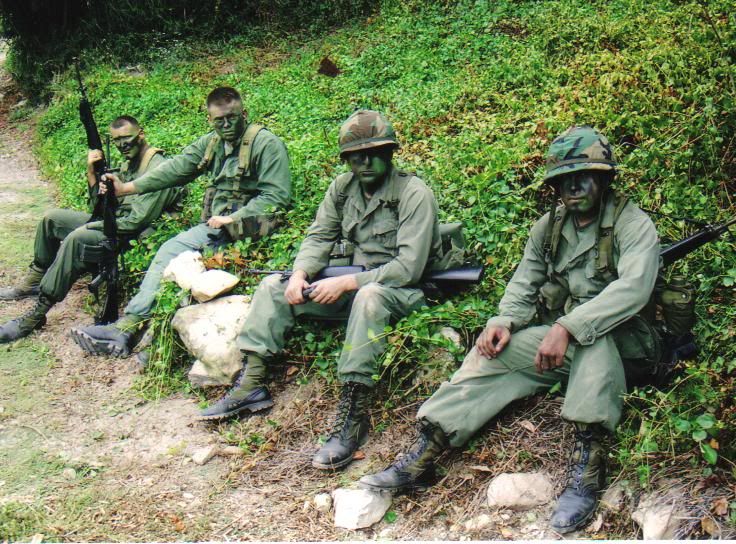 Furthermore, even if the reenactment is due to a more active process, the patient is not truly reenacting a past trauma, but rather a traumatic relationship. Consequently, in such cases it will be more productive to suggest this latter process, which is closer to the patient's subjective experience.
Furthermore, even if the reenactment is due to a more active process, the patient is not truly reenacting a past trauma, but rather a traumatic relationship. Consequently, in such cases it will be more productive to suggest this latter process, which is closer to the patient's subjective experience.
Once both the patient and the therapist understand what the patient is doing that contributes to the reenactment, the next task is to explore why the patient feels and acts in such ways. Inevitably, this will lead back historically to the traumatization that triggered and continues to cause the resulting feelings and behavior. Considerable time must be devoted to discovering how life was experienced for the patient as a child, because it must be ascertained how it influenced the individual, how the patient learned to cope, and what feelings were experienced.5,23 The overwhelming fear, terror, and related beliefs that the patient originally experienced in childhood must first be validated and acknowledged by both therapist and patient. In turn, in order to break the pattern, the patient must process and work through the entire traumatic experience throughout the course of therapy with the support of the therapist.
In turn, in order to break the pattern, the patient must process and work through the entire traumatic experience throughout the course of therapy with the support of the therapist.
An example is the therapy of a man who came for treatment because he had been feeling uncontrollably angry. He reported that he had been raised by an extremely physically abusive mother and a distant, removed father. He had been in therapy previously and felt that he had worked through many of his past issues, which indeed he had. As therapy progressed, it became evident that much of his rage was due to mistreatment and emotional abuse by his lover, which appeared to be a reenactment of his past relationship with his mother. When he recounted interactions when his lover had treated him “like dirt,” he displayed little affect and often shrugged it off even when his friends made comments to him about his lover's mistreatment of him. As his nonchalance and his tendency to block off emotion were pointed out to him, he was able to see how he tended to brush off his feelings, and he recognized how he had learned to do this at an early age to tolerate his mother's abusive behavior toward him.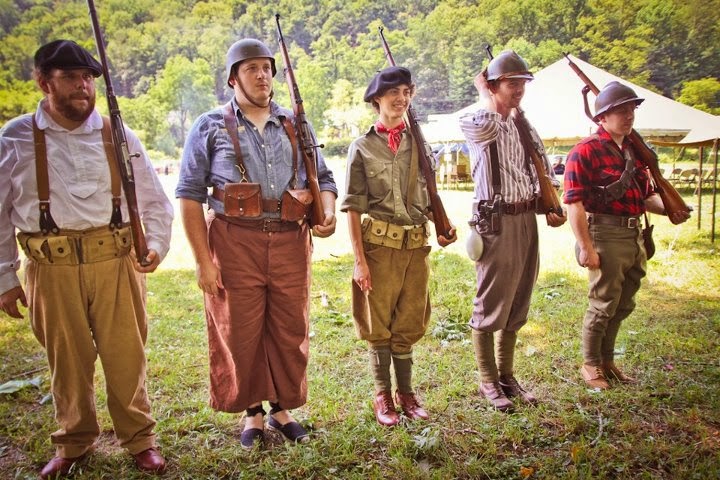 This led to an exploration of his early childhood environment, and over time he became significantly more aware of his feelings. He learned to attend to them and to use his feelings as a guide for action. He eventually left his lover because he no longer wanted to be the recipient of the lover's abuse.
This led to an exploration of his early childhood environment, and over time he became significantly more aware of his feelings. He learned to attend to them and to use his feelings as a guide for action. He eventually left his lover because he no longer wanted to be the recipient of the lover's abuse.
Patients will eventually come to see that whereas their feelings, beliefs, and ways to defend against overwhelming terror were appropriate and justified in the past, such intense feelings and defensive operations may no longer be as necessary. Through a painstakingly close examination of the individual's past and a process of allowing the patient to experience the intensity of the old traumatic feelings within the safety of the therapeutic relationship, the patient is given the opportunity to integrate the entire traumatic experience.36
Wolf37 has articulated this process in the following way: “A patient's self is strengthened by re-experiencing the archaic trauma, with its associated affects, in the here-and-now of a therapeutic situation that allows an integrating and self-enhancing restructuring of the self” (p.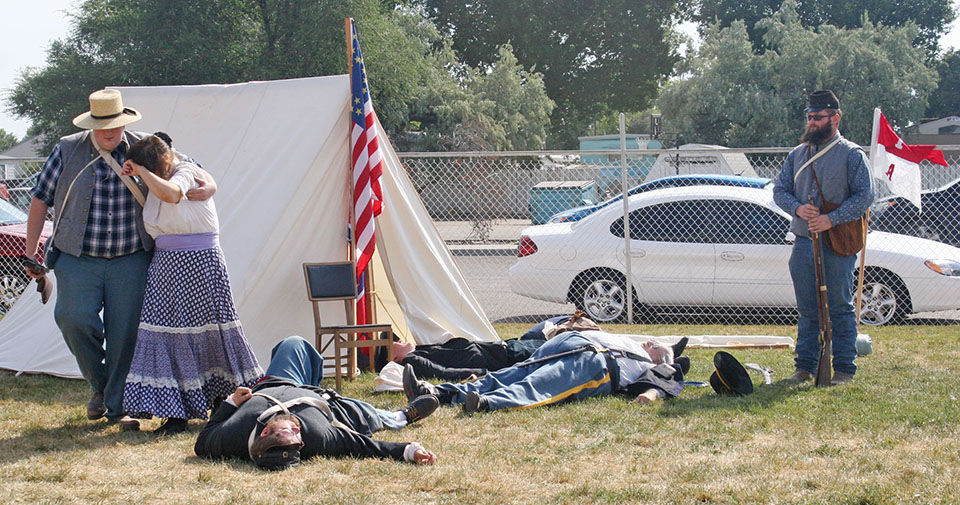 20103). Once the trauma has been integrated, the patient's feelings will be less intense and more manageable, and the person will be able to exercise better judgment as well as use less rigid defenses.
20103). Once the trauma has been integrated, the patient's feelings will be less intense and more manageable, and the person will be able to exercise better judgment as well as use less rigid defenses.
Although some patients may not have the ego strength or desire to explore early traumatization, therapy can still be of considerable benefit. Even without a full reworking of the individual's past traumatization, reenactments can be stopped by helping the patient to respond differently in the world through behavioral and cognitive change.
Throughout the course of therapy, the therapist's own countertransferential feelings should be examined and used to help understand patients' problems with reenactments. Boredom, anger, rage, or sexual feelings experienced throughout the course of therapy can be useful in understanding what patients engender in others that may play a role in the reenactments they experience. Without blaming patients for their reenactments, therapists can help them to better understand their vulnerabilities and how they may contribute to their own exploitation.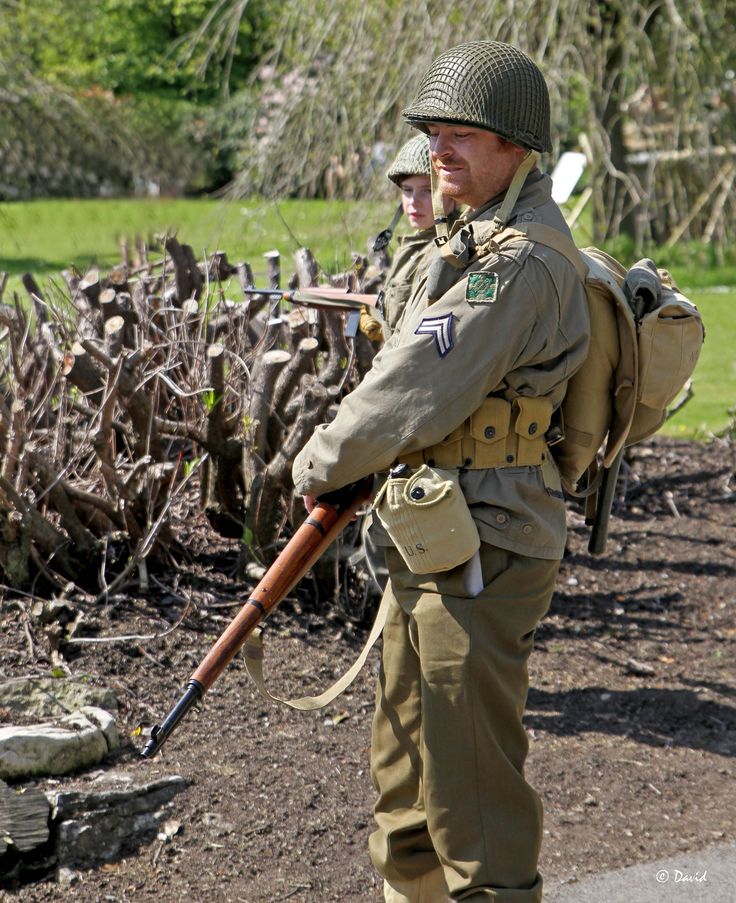
For example, a 32-year-old female patient with a long history of childhood sexual abuse noted to her therapist that she had been abused in many of her past relationships. In the early course of therapy, the therapist began to explore with her how it was that others took advantage of her, which did not prove to be particularly productive. As the therapy progressed, however, the therapist became aware of his own wish to take control of the patient's life, to rescue her, and to tell her what to do. When he examined these feelings, he became more cognizant of how timid and frail the patient's presentation was, and he decided that it would helpful to explore this. He began by inquiring how the patient imagined others viewed her. With specific questions about whether she thought others viewed her as powerful or powerless, the patient eventually began to better understand how she presented to others, which, in turn, played a role in her victimization. The therapist's awareness of his own feelings when working with the patient was the catalyst for this line of questioning that enabled the therapy to progress.
Whatever tools are used, the healing that needs to occur is not a short-term process. Successful clinical work can take years because the goals are to help patients work through overwhelming affect, modify their internal object relationships and cognitive structures, and change their basic ways of being in the world. Such work is necessary, however, if we are going to diminish their vulnerabilities and decrease their chances of getting involved in destructive reenactments.
In this article I have proposed a useful way to codify and conceptualize reenactments and offered strategies for addressing them in the therapeutic process. Although trauma survivors may actively reenact elements of past traumas, reenactments can also occur in inadvertent ways that result from psychological vulnerabilities and defensive strategies. In addition, although an active reenacting of a past traumatic situation may reflect an adaptive process, in other cases it may be a maladaptive defensive strategy that can cause the individual repeated difficulties. Understanding the many different ways in which reenactments can arise will help to focus and sharpen clinical intervention.
Understanding the many different ways in which reenactments can arise will help to focus and sharpen clinical intervention.
1. Horowitz MJ: Stress Response Syndrome. Northvale, NJ, Jason Aronson, 1976
2. Kardiner A: The Traumatic Neuroses of War. New York, P Hoeber, 1941
3. Krystal H: Trauma and affects. Psychoanal Study Child 1978; 33:81–116 [PubMed] [Google Scholar]
4. Sharfman MA, Clark DW: Delinquent adolescent girls: residential treatment in a municipal hospital setting. Arch Gen Psychiatry 1967; 17:441–447 [PubMed] [Google Scholar]
5. Herman JL: Trauma and Recovery. New York, Basic Books, 1992
6. van der Kolk BA, McFarlane AC: The black hole of trauma, in Traumatic Stress: The Effects of Overwhelming Experience on Mind, Body, and Society, edited by van der Kolk BA, McFarlane AC, Weisaeth L. New York, Guilford, 1996, 3–23
7. Russell DEH: The Secret Trauma: Incest in the Lives of Girls and Women. New York, Basic Books, 1986
8. van der Kolk BA, Greenberg MS: The psychobiology of the trauma response: hyperarousal, constriction, and addiction to traumatic reexposure, in Psychological Trauma, edited by van der Kolk BA.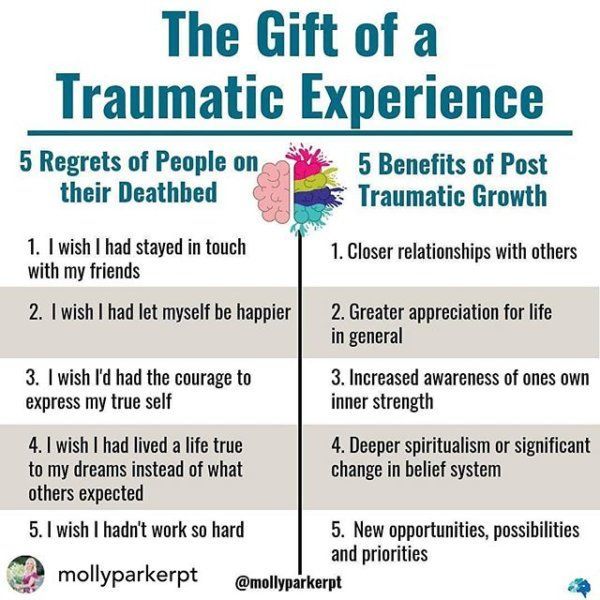 Washington, DC, American Psychiatric Press, 1987, 63–87
Washington, DC, American Psychiatric Press, 1987, 63–87
9. Browne A, Finkelhor D: Impact of child sexual abuse: a review of the literature. Psychol Bull 1986; 99:66–77 [PubMed] [Google Scholar]
10. Briere J, Runtz M: Post sexual abuse trauma, in Lasting Effects of Child Sexual Abuse, edited by Wyatt GE, Powell GJ. Newbury Park, CA, Sage, 1988, 85–100
11. Chu JA: The repetition compulsion revisited: reliving dissociated trauma. Psychotherapy 1991; 28:327–332 [Google Scholar]
12. Miller A: Thou Shalt Not Be Aware, translated by Hannum HH. New York, Meridian, 1984
13. van der Kolk BA: The complexity of adaptation to trauma: Self-regulation, stimulus discrimination, and characterological development, in Traumatic Stress: The Effects of Overwhelming Experience on Mind, Body, and Society, edited by van der Kolk BA, McFarlane AC, Weisaeth L. New York, Guilford, 1996, 182–213
14. Terr L: Too Scared To Cry. New York, Harper and Row, 1990
15. Freud S: Beyond the Pleasure Principle (1920), translated and edited by Strachey J. New York, WW Norton, 1961
New York, WW Norton, 1961
16. Kluft RP: Incest and subsequent revictimization: the case of therapist–patient exploitation, with a description of the sitting duck syndrome, in Incest-Related Syndromes of Adult Psychopathology, edited by Kluft RP. Washington, DC, American Psychiatric Press, 1990, 263–287
17. Chu JA: The revictimization of adult women with histories of childhood abuse. J Psychother Pract Res 1992; 1:259–269 [PMC free article] [PubMed] [Google Scholar]
18. Janet P: Psychological Healing, vol 1 (1919), translated and edited by Paul E, Paul C. New York, Macmillan, 1925
19. Vaillant GE: Adaptation to Life. Boston, Little, Brown, 1977
20. Peck EC: The traits of true invulnerability and posttraumatic stress in psychoanalyzed men of action, in The Invulnerable Child, edited by Anthony EJ. New York, Guilford, 1987, 315–360
21. Anthony EJ: Risk, vulnerability, and resilience: an overview, in The Invulnerable Child, edited by Anthony EJ. New York, Guilford, 1987, 3–48
22.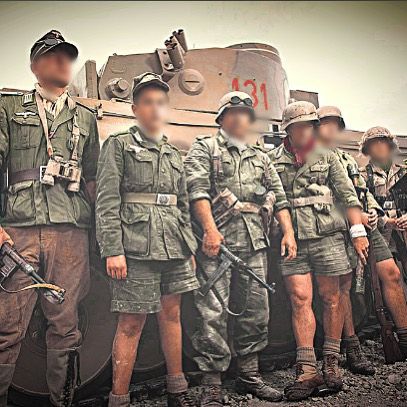 van der Kolk BA, McFarlane AC, der Hart O: A general approach to treatment of posttraumatic stress disorder, in Traumatic Stress: The Effects of Overwhelming Experience on Mind, Body, and Society, edited by van der Kolk BA, McFarlane AC, Weisaeth L. New York, Guilford, 1996, 417–440
van der Kolk BA, McFarlane AC, der Hart O: A general approach to treatment of posttraumatic stress disorder, in Traumatic Stress: The Effects of Overwhelming Experience on Mind, Body, and Society, edited by van der Kolk BA, McFarlane AC, Weisaeth L. New York, Guilford, 1996, 417–440
23. McCann IL, Pearlman LA: Psychological Trauma and the Adult Survivor. New York, Brunner/Mazel, 1990
24. Pine F: Developmental Theory and Clinical Process. New Haven, CT, and London, Yale University Press, 1985
25. Fenichel O: The Psychoanalytic Theory of Neurosis. New York, WW Norton, 1945
26. Parkes CM, Weiss RS: Recovery from Bereavement. New York, Basic Books, 1983
27. Goodwin J, McCarthy T, DiVasto P: Physical and sexual abuse of the children of adult incest victims, in Sexual Abuse: Incest Victims and Their Families, edited by Goodwin J. Boston, Wright/PSG, 1982, 139–153
28. Kaufman J, Zigler E: The intergenerational transmission of child abuse, in Child Maltreatment: Theory and Research on the Causes and Consequences of Child Abuse and Neglect, edited by Cicchetti D, Carlson V. Cambridge, UK, and New York, Cambridge University Press, 1989, 129–150
Cambridge, UK, and New York, Cambridge University Press, 1989, 129–150
29. James J, Myerding J: Early sexual experience and prostitution. Am J Psychiatry 1977; 134:1381–1385 [PubMed] [Google Scholar]
30. Silbert M, Pines A: Sexual abuse as an antecedent to prostitution. Child Abuse Negl 1981; 5:407–411 [Google Scholar]
31. Mitchell D, Osborne EW, O'Boyle MW: Habituation under stress: shocked mice show nonassociative learning in a T-maze. Behav Neural Biol 1985; 43:212–217 [PubMed] [Google Scholar]
32. Krystal H: Integration and Self-Healing. Hillsdale, NJ, Analytic Press, 1988
33. van der Kolk BA: The psychological consequences of overwhelming life experiences, in Psychological Trauma, edited by van der Kolk BA. Washington, DC, American Psychiatric Press, 1987, 1–30
34. Courtois CA: Healing the Incest Wound. New York, WW Norton, 1988
35. Lindy JD: Psychoanalytic psychotherapy of posttraumatic stress disorder: the nature of the therapeutic relationship, in Traumatic Stress: The Effects of Overwhelming Experience on Mind, Body, and Society, edited by van der Kolk BA, McFarlane AC, Weisaeth L. New York, Guilford, 1996, 525–536
New York, Guilford, 1996, 525–536
36. Rozynko V, Dondershine HE: Trauma focus group therapy for Vietnam veterans with PTSD. Psychotherapy 1991; 28:157–161 [Google Scholar]
37. Wolf ES: Treating the Self. New York, Guilford, 1988
PTSD, Repetition Compulsion & Psychological Stress
On this blog, we often discuss the ways in which substance abuse affects the brain. Regular drug use corrupts neurotransmission, builds new associations, and rewards negative behaviors. Would you be surprised to learn that trauma can rewire your brain in a similar way? If you find yourself continually seeking stressful situations, you may be stuck in a loop of creating and repeating your own trauma.
Trauma Definition: What is Trauma?Trauma is a universal human experience. At some point, we will all lose a love one, live through a natural disaster, or witness a disturbing event. An unlucky percentage will be the victims of ongoing abuse.
Regardless of what you go through, trauma is defined as the gap between an external threat and our inner resources to deal with it. Any time that a person is overwhelmed by fear or hopelessness, they have experienced such an event.
Any time that a person is overwhelmed by fear or hopelessness, they have experienced such an event.
When these incidents come to pass, our brains are changed forever. Research indicates that traumatic stress can result in “increased cortisol and norepinephrine responses to subsequent stressors.” This means that once you have been in a car accident, for example, you are more likely to find yourself jumping at sudden noises. The brain also learns to associate certain stimuli with the traumatic event; in the same example, you may develop anxiety around driving (or even riding in) a similar vehicle to the one that crashed.
Unfortunately, our brain’s ability to learn from negative experiences means that many of us are prone to recreating the very situations that caused our trauma in the first place.
Emotional Abuse, Reenactment, and RevictimizationVictims of trauma are marked by an array of psychiatric symptoms, including chronic stress, intrusive thoughts, nightmares of the event, and hypervigilance.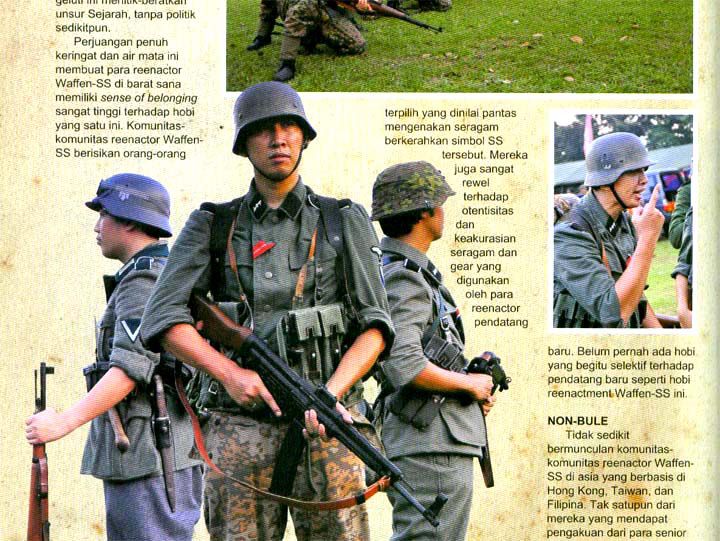 They may also unconsciously repeat the trauma in their day-to-day lives. In the field of clinical psychology, these phenomena are known as reenactments.
They may also unconsciously repeat the trauma in their day-to-day lives. In the field of clinical psychology, these phenomena are known as reenactments.
This pattern is most easily demonstrated through the example of adverse childhood experiences (ACEs). Research shows that women who were sexually abused in their youth are more likely to be the victims of similar abuse in adulthood. While it may seem odd that a person who has undergone such horrific treatment would replicate the experience, this type of reenactment is both common and easily explained.
Put simply, a person’s vulnerability to abuse is often directly related to the trauma they have experienced. Cincinnati Children’s Noll Lab explains that revictimization – becoming the victim of a similar type of abuse later in life – may be impacted by factors such as depression, substance use, dissociation, and attachment issues attributed to the first instance of abuse.
If you find yourself engaging in a series of bad relationships, overcoming a laundry list of substance use disorders, or repeating your trauma, there are a few scientific explanations.
Your standards have shifted. Those who have experienced active addiction understand the rollercoaster of drinking and drug use. They have felt the depths of withdrawal and the highs of substance use. These feelings can linger, and you may find yourself seeking similar sensations through other outlets.
You may not remember the trauma. There is significant evidence that, in order to cope with trauma, our brains may block our capacity to remember it. This may happen in the moment (dissociation, when a person mentally “leaves the room”) or after the fact (through a type of amnesia). These mental escapes can inhibit our ability to identify similar threats in the future.
These events affect your self-esteem. Unfortunately, trauma can diminish a person’s self-esteem. A child may rationalize that being placed in foster care was something they deserved, for example, rather than a necessity for their safety. These internalized beliefs result in self-sabotaging behaviors later in life.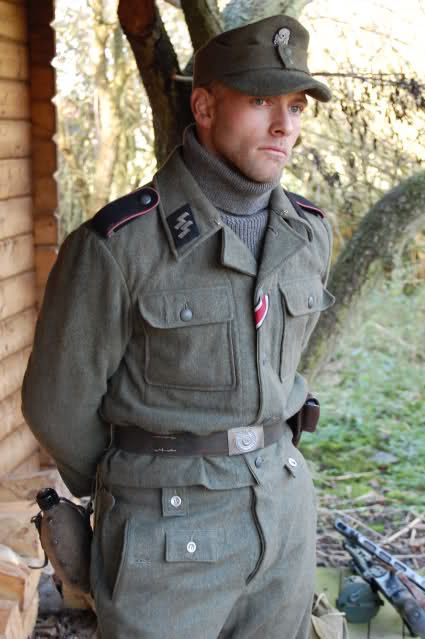
Trauma clouds your perception of relationships. If you have had an abusive partner in the past, you are probably familiar with the cycle of such a relationship. These manipulative individuals will “love bomb” their significant others between negative events, resulting in extremely high highs and very low lows. This trains people to believe that all relationships are turbulent by nature.
No matter what you have gone through or how it has affected you, it is important to know that help is available.
Healing TraumaWhile trauma significantly impacts our lives, it is possible to lessen its effects and begin to heal. Therapists are especially instrumental in this process. Through professional care, you can find safety, name your trauma, and avoid future reenactments.
In therapy, you will be able to share your story in a safe space. The clinician will help you to analyze what happened and how it has affected you. Group sessions and experiential therapies may also be used to generate feelings of acceptance, experience social support, and uncover nonverbal means of expression.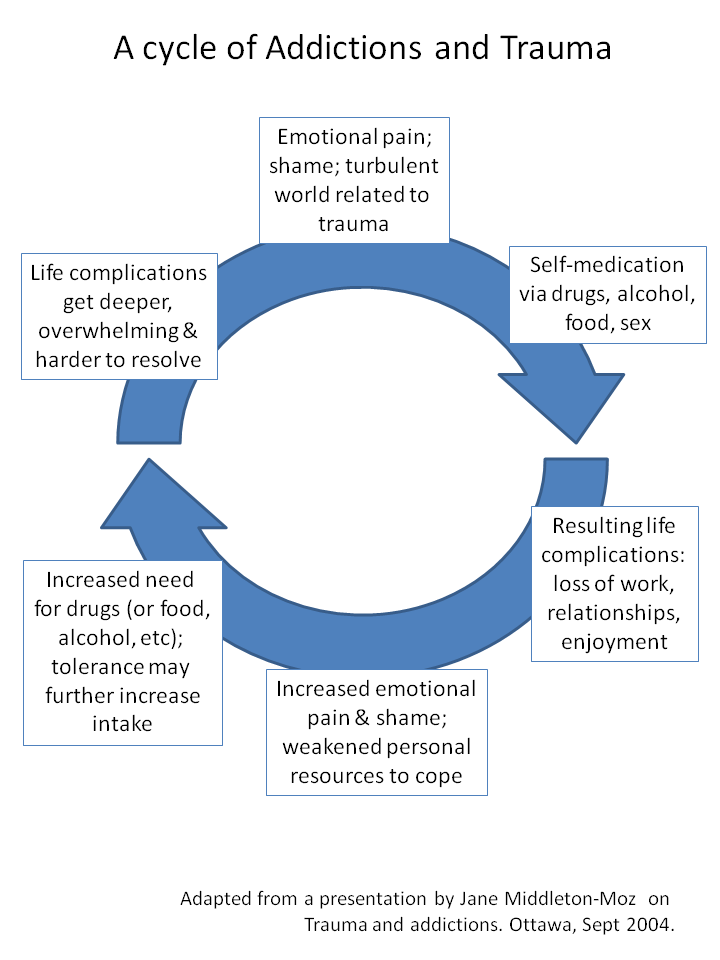
If trauma has shaped your life and resulted in a pattern of stress-seeking behavior, know that you are not alone. Help is available. At Lakeside-Milam, we specialize in using trauma-informed care to address mental illness and substance use disorder. To learn more, contact our admissions staff today.
Reenactment in Contemporary Art - T&P
The last two or three decades in contemporary art have been marked by a "historiographical turn": artists turning to the themes of archiving, memory, nostalgia, retrospection. Reenactment, that is, the artistic reproduction or reproduction of the events of the past, has become one of the most striking manifestations of this "turn". T&P talked about the main artists working in this genre and traced the connection between theatrical productions of the Russian revolution, art and trauma therapy. nine0003
In Soviet Petrograd in 1920, almost in succession - on May 1, July 19, July 20 and November 8, mass theater performances were organized - one of the first of its kind. These thousands of performances, taken outside the theater buildings and the classical opposition "stage and hall", "actors and spectators", were, of course, primarily ideological statements designed to glorify the Revolution. So, the first of them - "The Mystery of Liberated Labor", played on Vasilyevsky Island in front of the Stock Exchange, had about four thousand participants and about forty thousand spectators. Like the next two, it was entirely allegorical: there were oppressors and slaves, an uprising of the masses and the victory of the oppressed, the advent of peace and the unity of the people under the "International". nine0005
These thousands of performances, taken outside the theater buildings and the classical opposition "stage and hall", "actors and spectators", were, of course, primarily ideological statements designed to glorify the Revolution. So, the first of them - "The Mystery of Liberated Labor", played on Vasilyevsky Island in front of the Stock Exchange, had about four thousand participants and about forty thousand spectators. Like the next two, it was entirely allegorical: there were oppressors and slaves, an uprising of the masses and the victory of the oppressed, the advent of peace and the unity of the people under the "International". nine0005
The most interesting of the four productions, however, can be considered the last - The Capture of the Winter Palace, staged by Nikolai Evreinov, Alexander Kugel, Nikolai Petrov and Yuri Annenkov (they also made a film after its completion). Unlike all the previous ones, it was also (with certain assumptions) a historical reconstruction played directly on the square near the Winter Palace and in the vicinity, where the events of 1917 unfolded.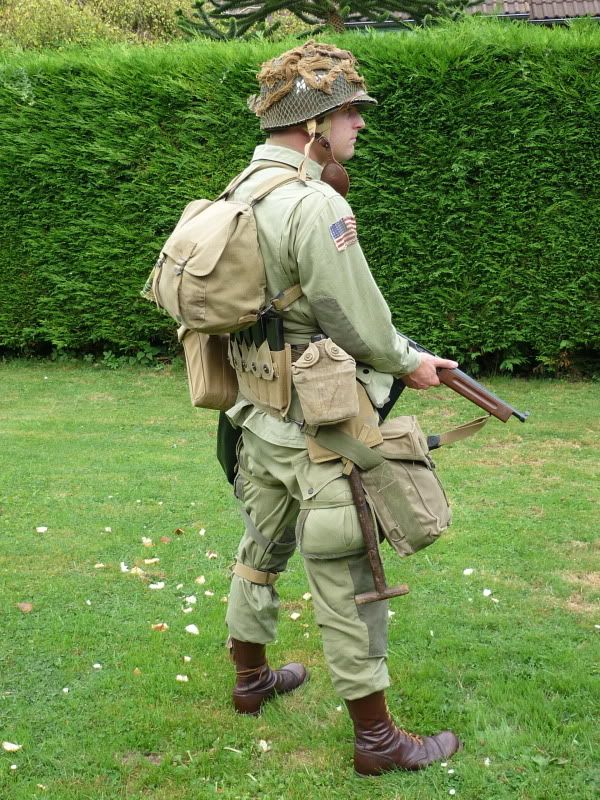 In the first part, the performance looked quite classic, since the action took place on two sites - "white" (Capital) and "red" (Labour). nine0005
In the first part, the performance looked quite classic, since the action took place on two sites - "white" (Capital) and "red" (Labour). nine0005
Events on the first one were presented in a comedic way, on the second one - in the genre of heroic drama. The attention of the audience was alternately drawn to one or the other site with the help of lighting. The second part of the performance was moved to the area. When the victory of the revolution became obvious, a line of cars appeared on the square, driving from the "white" platform to the Winter Palace. The ministers were supposed to hide there. Workers and soldiers followed them in trucks. Under the volleys of the Aurora, the attackers burst into the courtyard, the lights came on in the windows, and through the curtains the shadows of the actors playing the arrest of the interim government could be seen. The final chords of the production were the hoisting of the red banner over the palace and the performance of the Internationale.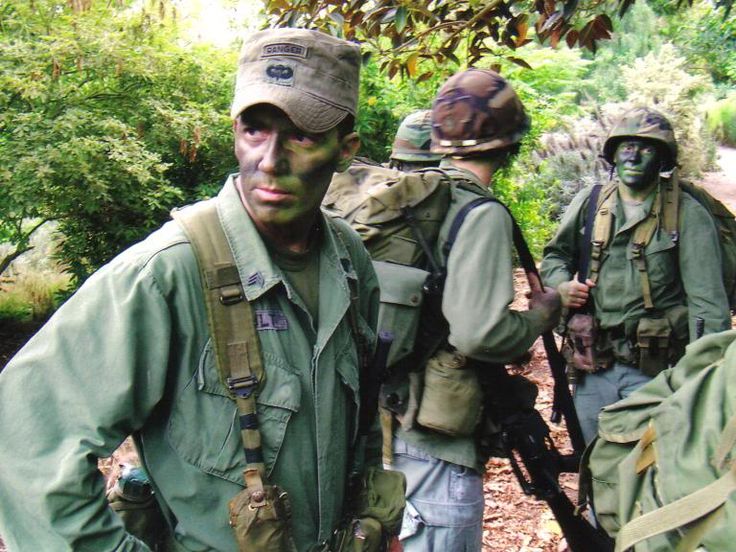 nine0005
nine0005
The Capture of the Winter Palace had too strong an ideological component for a historical reconstruction, and Evreinov himself claimed that he created a work of art and did not set himself the task of thoroughly reproducing the historical events of three years ago. Moreover, the script obviously did not correspond to the historical truth: for example, the Aurora was not standing in front of the palace where it was brought for filming, but at the bridge near the Gulf of Finland. The libretto of the production also honestly warned that in reality everything was not quite like that. However, it is important that the events played were, despite any warnings, still similar to the truth. For actors and extras (their number varies in different sources, but the most common mention is 8,000 people) and spectators (they write that there were from 40 to 100 thousand) involved directly in the action, as well as for those who saw the production on record , she, in fact, could replace reality. nine0005
nine0005
“The practice of re-enactment is primarily distinguished by the fact that it has a kind of “open ending”, since its participants can bring their own interpretation and often in the process of developing it, move away from what they originally reproduced.”
It is also interesting that Nikolai Evreinov was the developer and adherent of the so-called theory of "theatricalization of life". It is known that before filming The Capture, he wanted to invite real participants in the storming of the Winter Palace to participate in the production and shoot based on their memories. It was impossible to implement such a plan in post-revolutionary Russia, under the conditions of the Civil War, and it was not necessary in order to create an ideological work praising the Revolution. However, this original intention of Evreinov is at odds with his own statement that he did not really strive for historical truth. nine0005
In the brochure "About a new mask (autobioreconstructive)" Nikolai Evreinov described the method he wanted to use when filming "The Capture" with real participants in the events. In it, he told a real incident that took place at the 13th Labor School, where a group of students carried out a theatrical reconstruction of a love polygon, thereby getting rid of "the negative influence of passions." This idea of replaying events anew by participants in a story is very reminiscent of the well-known modern practice of reenactment (from English - re-enactment), that is, reproduction, re-creation of something that happened in the past. Today, this practice is used in psychiatry, experimental archeology, criminology, and art. Its examples can be historical reconstructions, which are still popular today, as well as investigative experiments. nine0005
In it, he told a real incident that took place at the 13th Labor School, where a group of students carried out a theatrical reconstruction of a love polygon, thereby getting rid of "the negative influence of passions." This idea of replaying events anew by participants in a story is very reminiscent of the well-known modern practice of reenactment (from English - re-enactment), that is, reproduction, re-creation of something that happened in the past. Today, this practice is used in psychiatry, experimental archeology, criminology, and art. Its examples can be historical reconstructions, which are still popular today, as well as investigative experiments. nine0005
For example, if we recall Thor Heyerdahl's trip to Kon-Tiki, then in essence it was a reinstatement (and an investigative experiment) designed to prove the theory that it is possible to get from South America to Polynesia on a raft of balsa logs and that this is exactly what the natives did in ancient times. In contemporary art, the practice of reinstatement is used in their works by, among others, such artists as Rod Dickenson, Omer Fast, Irina Botea, Andrea Fraser, Robert Longo, Marina Abramovich. Over the past decade, more than a dozen major group exhibitions have been held, one way or another devoted to the practice of re-enactment and the relationship between the concepts of "memory", "history" and "past": Life, Once More in Rotterdam, History Will Repeat Itself in Berlin, Re / ACT! in Bucharest, Not Quite How I Remember It in Toronto, Remakes in Bordeaux, etc. nine0005
Over the past decade, more than a dozen major group exhibitions have been held, one way or another devoted to the practice of re-enactment and the relationship between the concepts of "memory", "history" and "past": Life, Once More in Rotterdam, History Will Repeat Itself in Berlin, Re / ACT! in Bucharest, Not Quite How I Remember It in Toronto, Remakes in Bordeaux, etc. nine0005
The ugly Russian word "reenactment" cannot be replaced by a more adequate analogue, because, unfortunately, there is no absolutely exact analogue, but there is already a terrible confusion in terms and concepts. Repetition, simulation, imitation, reproduction, restoration, reconstruction - all these words seem to be synonymous. However, none of them includes everything that re-enactment implies. The art theorist Robert Blackson summed up the difference most clearly: "Reenactment is different in that it involves transformation through memory, theory, and history, and leads to unique results that are different from the original event. " Thus, the practice of re-enactment is primarily distinguished by the fact that it has a kind of "open ending", since its participants can bring their own interpretation and often in the process of developing it, move away from what they originally reproduced. According to Gilles Deleuze, the repetition of each AB segment leads to a mental opposition of each AB, which in turn leads to a contradiction of all ABs. Reenactment provides an opportunity to rethink the event and see it in a new light - as it was, obviously, with the students of the 13th Labor School, about whom Evreinov wrote. In fact, they managed to conduct group therapy. nine0005
" Thus, the practice of re-enactment is primarily distinguished by the fact that it has a kind of "open ending", since its participants can bring their own interpretation and often in the process of developing it, move away from what they originally reproduced. According to Gilles Deleuze, the repetition of each AB segment leads to a mental opposition of each AB, which in turn leads to a contradiction of all ABs. Reenactment provides an opportunity to rethink the event and see it in a new light - as it was, obviously, with the students of the 13th Labor School, about whom Evreinov wrote. In fact, they managed to conduct group therapy. nine0005
Evreinov's idea of re-playing a mass event with actors who would be real participants in this very event was reproduced in his own way in 2001 by Jeremy Deller in one of his most famous works, Battle of Orgreave. The story told in it about the largest mining strike in England, which lasted about a year in 1984-1985, is fully based on the memories of the participants and eyewitnesses of the events: the miners and the police. The actors replay what they remember, repeating their own actions from twenty years ago. Whether some kind of objective reality is achieved is a big question, but the fact that reinstatement plays a certain liberating role here is obvious. There is a lot of politics in the critical descriptions of the work: it is known what repressive measures followed the strike. Thatcher's persecution of the "internal enemy" in the face of the miners led to the widespread closure of mines and the virtual destruction of an entire industrial sector, which was also accompanied by a harsh condemnation of miners' strikes in the press. nine0005
The actors replay what they remember, repeating their own actions from twenty years ago. Whether some kind of objective reality is achieved is a big question, but the fact that reinstatement plays a certain liberating role here is obvious. There is a lot of politics in the critical descriptions of the work: it is known what repressive measures followed the strike. Thatcher's persecution of the "internal enemy" in the face of the miners led to the widespread closure of mines and the virtual destruction of an entire industrial sector, which was also accompanied by a harsh condemnation of miners' strikes in the press. nine0005
Twenty years later, the economic impact of these actions was still strong in Northern England. Just like psychological ones. Characteristically, the popular reading of the work is that Deller, having allowed the participants in the events to play them again and show their point of view, thus allowed them to finally restore justice. In fact, talking about the restoration of justice does not seem entirely correct, more precisely, the question should be raised about for whom this justice was restored. It is hardly possible to say that this video art has corrected the situation from a historical point of view, once and for all dotted all the i's. Rather, he gave the participants the opportunity to speak out in the end, that is, it worked mainly on a psychological level, and first of all for each of those who were involved in the filming. Here we can recall Deleuze's theory from "Repetition and Difference": repetition itself does not change anything in the repeated object, but it does change something in the mind that repetition observes. nine0005
In fact, talking about the restoration of justice does not seem entirely correct, more precisely, the question should be raised about for whom this justice was restored. It is hardly possible to say that this video art has corrected the situation from a historical point of view, once and for all dotted all the i's. Rather, he gave the participants the opportunity to speak out in the end, that is, it worked mainly on a psychological level, and first of all for each of those who were involved in the filming. Here we can recall Deleuze's theory from "Repetition and Difference": repetition itself does not change anything in the repeated object, but it does change something in the mind that repetition observes. nine0005
From this point of view, another, more intimate work, touching on the same theme of restoring justice, is interesting. In 2000, Pierre Huyghe made a video called "Third Memory" with American John Voitovich, who served ten years in prison for robbing a bank in Brooklyn. Voitovich replays the events, directs the film, directs the actors and tells the story. She is famous: on August 22, 1972, John Voitovich and Salvatore Naturile attempted to rob a bank. However, everything went wrong: there was no money in the bank, the police came to the call, the visitors were taken hostage, the robbers demanded a plane to leave the country. Voitovich went to rob a bank in order to get money for a sex change operation for his partner, who dreamed of doing it. In addition to the police, journalists turned up at the bank, and an incredible noise arose in the press. The robbery was the first event of its kind to be covered in such detail in the media. Reports about him even overshadowed the news of Nixon's appointment to the presidency. 14 hours later, Naturile was shot to death, and Voitovich was arrested and sentenced to 20 years in prison, but later released on parole. nine0005
She is famous: on August 22, 1972, John Voitovich and Salvatore Naturile attempted to rob a bank. However, everything went wrong: there was no money in the bank, the police came to the call, the visitors were taken hostage, the robbers demanded a plane to leave the country. Voitovich went to rob a bank in order to get money for a sex change operation for his partner, who dreamed of doing it. In addition to the police, journalists turned up at the bank, and an incredible noise arose in the press. The robbery was the first event of its kind to be covered in such detail in the media. Reports about him even overshadowed the news of Nixon's appointment to the presidency. 14 hours later, Naturile was shot to death, and Voitovich was arrested and sentenced to 20 years in prison, but later released on parole. nine0005
Three years after the events described, the movie "Dog Afternoon" was released based on the robbery, in which Voitovich (there - Sonny Worzhik) was played by Al Pacino. The income from the box office of the film was partially given to the former hostages, and even Voitovich's lover received the amount of money for a sex change operation.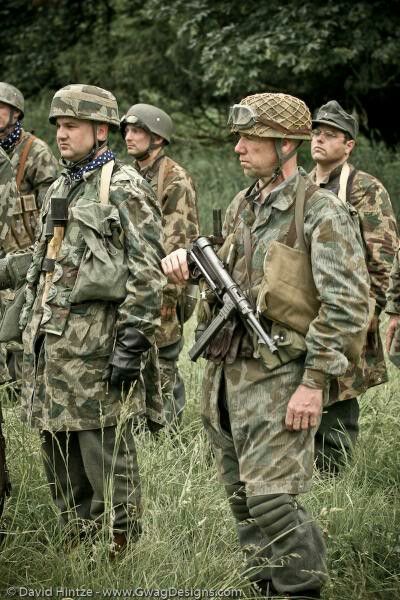 The only one who did not receive anything was Voitovich himself. In addition, he claimed that the film distorted the truth and "in fact" everything was not so. "Third Memory" combines video footage of the re-enactment, excerpts from "Dog Afternoon" and reports 1972 years from the event. And although all these sources seem quite reliable at first glance, it soon becomes clear that none of them adequately shows what really happened.
The only one who did not receive anything was Voitovich himself. In addition, he claimed that the film distorted the truth and "in fact" everything was not so. "Third Memory" combines video footage of the re-enactment, excerpts from "Dog Afternoon" and reports 1972 years from the event. And although all these sources seem quite reliable at first glance, it soon becomes clear that none of them adequately shows what really happened.
"Memory may not correspond to reality at all and in general is in many ways a creative act, since there is such a phenomenon as false memory - often more detailed and detailed than non-false one."
Giorgio Agamben once wrote in the definition of the word "witness" that there are two of them in the original in Latin: tesis - one who testifies in court during a trial and supersteps - one who has experienced something, experienced some event and , respectively, was his eyewitness. Interestingly, he then gives the example of a Holocaust survivor and remarks: “He is an eyewitness, but his testimony has nothing to do with the testimony at the trial (he is not neutral enough for this).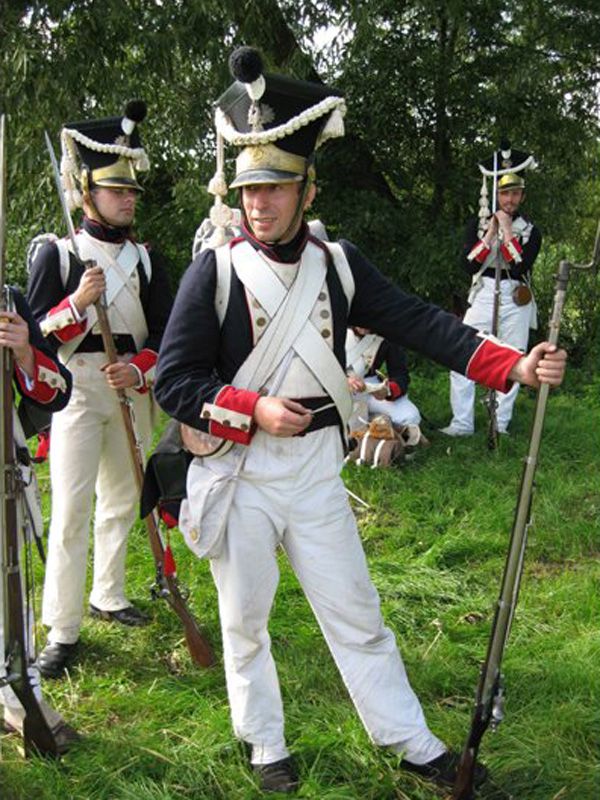 ” The comparison may not seem quite obvious, but the same can be said about Voitovich, who, having survived those 14 hours, and the bank and subsequent years of imprisonment, was constantly tormented by the consciousness that his history was being distorted, thereby depriving him not only of the role of an eyewitness of events, but also his very self-identification, replaced for everyone by the bright hero Al Pacino. Voitovich's memory is not just blurred by the years that lie between the time of the reinstatement and the real event, but also by memories of the film and everything that was filmed and written about the robbery in hot pursuit. His memories are deeply personal, they carry a traumatic experience that deprives him of objectivity. While Voitovich is trying to convince the audience of his neutrality and that it is he and only he who knows what happened, despair begins to sound in his story, and the unconvincing narrative comes to the fore. nine0005
” The comparison may not seem quite obvious, but the same can be said about Voitovich, who, having survived those 14 hours, and the bank and subsequent years of imprisonment, was constantly tormented by the consciousness that his history was being distorted, thereby depriving him not only of the role of an eyewitness of events, but also his very self-identification, replaced for everyone by the bright hero Al Pacino. Voitovich's memory is not just blurred by the years that lie between the time of the reinstatement and the real event, but also by memories of the film and everything that was filmed and written about the robbery in hot pursuit. His memories are deeply personal, they carry a traumatic experience that deprives him of objectivity. While Voitovich is trying to convince the audience of his neutrality and that it is he and only he who knows what happened, despair begins to sound in his story, and the unconvincing narrative comes to the fore. nine0005
Mark Twain once said: “When I was young, I remembered absolutely everything: both what was and what was not.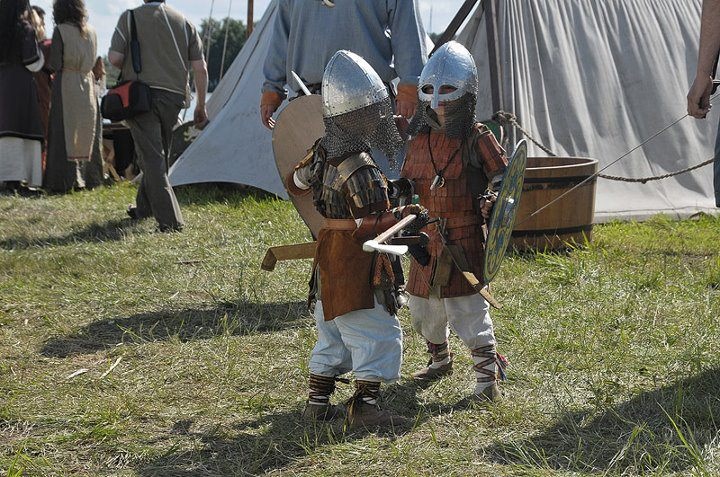 But I am getting old, and soon I will remember only the last. It is characteristic that studies of the mechanisms of memory began in earnest only in the 70s, and Elizabeth Loftus was one of the first to point out that memory may not correspond to reality at all and, in general, is in many ways a creative act, since there is such a phenomenon as false memory is often more detailed and detailed than non-false memory. Voitovich in "The Third Memory" suffers just from the regular manifestations of false memory. Despite all efforts, his words cannot be taken as objective evidence. He constantly draws parallels with the film, sometimes even giving the impression that the film was made before the real robbery. In a sense, he no longer portrays himself twenty years ago, but himself, played by Al Pacino. The only parallel projected scene in the video (the installation consists of 2 screens) is the scene from Dog Afternoon when the robbers open the safe and go inside. On another screen, Voitovich of the 2000 model does the same.
But I am getting old, and soon I will remember only the last. It is characteristic that studies of the mechanisms of memory began in earnest only in the 70s, and Elizabeth Loftus was one of the first to point out that memory may not correspond to reality at all and, in general, is in many ways a creative act, since there is such a phenomenon as false memory is often more detailed and detailed than non-false memory. Voitovich in "The Third Memory" suffers just from the regular manifestations of false memory. Despite all efforts, his words cannot be taken as objective evidence. He constantly draws parallels with the film, sometimes even giving the impression that the film was made before the real robbery. In a sense, he no longer portrays himself twenty years ago, but himself, played by Al Pacino. The only parallel projected scene in the video (the installation consists of 2 screens) is the scene from Dog Afternoon when the robbers open the safe and go inside. On another screen, Voitovich of the 2000 model does the same.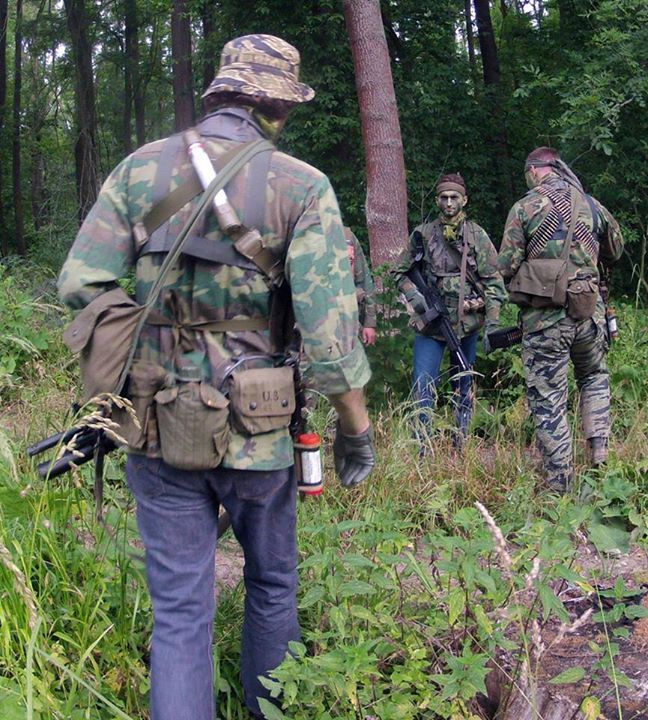 And here a doubt creeps in: what comes first? Did the film repeat the scene of the real robbery so successfully, or is the current Voitovich repeating the scene from the film? nine0005
And here a doubt creeps in: what comes first? Did the film repeat the scene of the real robbery so successfully, or is the current Voitovich repeating the scene from the film? nine0005
All these questions undoubtedly indicate that Woitovich's attempt to restore justice in Wiig's work is not successful. The look of the former robber is too subjective, and there is too much desperation in his voice. The audience, if properly analyzed, is unlikely to believe him, and it is unlikely that the audience of Wiig's video art exhibited in the gallery can be compared in size with the audience of the famous Hollywood film. It is unlikely that they will even be the same people. But still, a certain "restoration of justice" occurs: after all, Voitovich gets the opportunity to relive the events and tell his point of view. In this case, reenactment plays the role of trauma therapy, allowing the participant in the events to regain their identity, to separate it from the images created by cinema, to regain life, once turned into a performance. nine0005
nine0005
Speaking of trauma therapy, it is interesting how much the very concept of trauma has in common with re-enactment. Since Freud, studies of the state of trauma indicate that it differs from a normal wound on the body that can be healed in that it happens so suddenly and unexpectedly that the mind does not have time to become aware of it, and therefore the trauma is beyond consciousness until it begins to manifest yourself again and again in nightmares and repeated actions of the one who experienced it. This repetition of actions leads to the fact that the trauma never ends up in the past, but always remains in the present, with its carrier. nine0005
One of the most vivid metaphorical descriptions of the psychological aspects of a traumatic condition can be found in Cathy Caruth, who considers Torquato Tasso's poem "Jerusalem Delivered" for this. In it, one of the heroes, Tancred, kills his beloved, Clorinda, by mistake. Later, he pierces a tree with his sword, which involuntarily reminds himself of the murder and suddenly hears the voice of the deceased Clorinda. “This voice that cries out to him, paradoxically, is released through a new wound,” Karut writes. Tancred here does not simply repeat his action, but through this repetition for the first time gains the opportunity to hear a voice addressed to him and telling what he has done. The voice of his beloved, turning to him, becomes evidence of the past, which he unintentionally repeated. Thus, Tancred's story reflects the traumatic experience not just as a riddle of repeated and unconscious human actions, but also as a riddle of otherness (otherness) of an inner voice crying out from a wound, a voice that has become a witness to true events that Tancred himself is not fully aware of. nine0005
“This voice that cries out to him, paradoxically, is released through a new wound,” Karut writes. Tancred here does not simply repeat his action, but through this repetition for the first time gains the opportunity to hear a voice addressed to him and telling what he has done. The voice of his beloved, turning to him, becomes evidence of the past, which he unintentionally repeated. Thus, Tancred's story reflects the traumatic experience not just as a riddle of repeated and unconscious human actions, but also as a riddle of otherness (otherness) of an inner voice crying out from a wound, a voice that has become a witness to true events that Tancred himself is not fully aware of. nine0005
In Artur Zmievsky's video "80064", the artist persuades 92-year-old Josef Tarnava, a former prisoner of Auschwitz, to re-tattoo the number he got as a concentration camp prisoner. This tattoo can be seen as a literal representation of trauma. She, like a scar, remains with the wearer forever, forever reminding him of the past, but at the same time only symbolizes what happened, without providing details.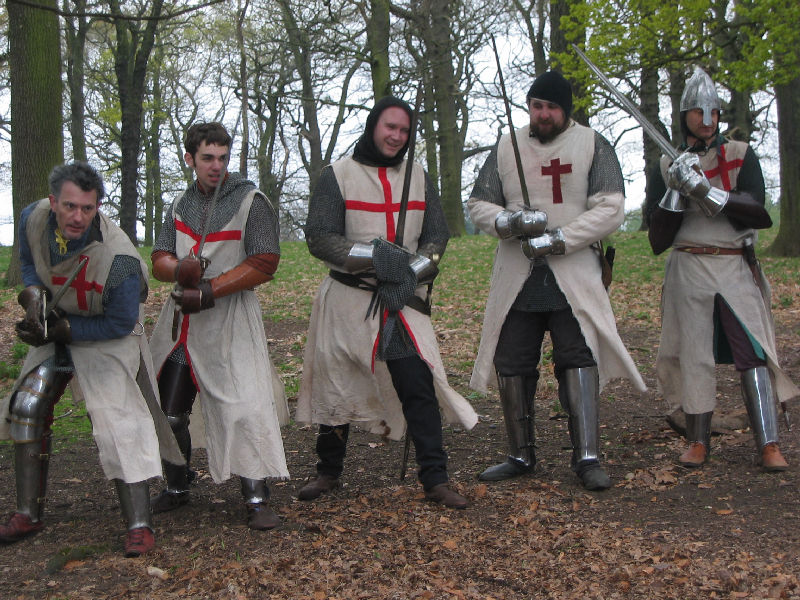 At first, it can be assumed that the artist just wants to conduct a session of trauma therapy: updating a tattoo means repeating an action once created, a reenactment that can cause a wave of memories of the past and force the participant in the events to finally draw the line between the past and the present, thus breaking out of the vicious circle. Nothing of the kind happens, and the therapy session fails. Tarnava's reactions are interesting. In fact, he prides himself on his eternal reminder of the past. The dialogue that takes place between him and Zhmievsky, while the latter is trying to convince the hero of the film, leaves no doubt about this. “The number will not cease to be authentic from the fact that we do this. On the contrary, it will be more authentic. It will be brighter! — convinces the artist. “It will not be original,” Tarnava objects. "Will be. Such things cannot be removed or changed. It will remain original,” Zmijewski insists. “If I let a person who survived Auschwitz look at it, he or she will immediately say: “This is not an Auschwitz number.
At first, it can be assumed that the artist just wants to conduct a session of trauma therapy: updating a tattoo means repeating an action once created, a reenactment that can cause a wave of memories of the past and force the participant in the events to finally draw the line between the past and the present, thus breaking out of the vicious circle. Nothing of the kind happens, and the therapy session fails. Tarnava's reactions are interesting. In fact, he prides himself on his eternal reminder of the past. The dialogue that takes place between him and Zhmievsky, while the latter is trying to convince the hero of the film, leaves no doubt about this. “The number will not cease to be authentic from the fact that we do this. On the contrary, it will be more authentic. It will be brighter! — convinces the artist. “It will not be original,” Tarnava objects. "Will be. Such things cannot be removed or changed. It will remain original,” Zmijewski insists. “If I let a person who survived Auschwitz look at it, he or she will immediately say: “This is not an Auschwitz number.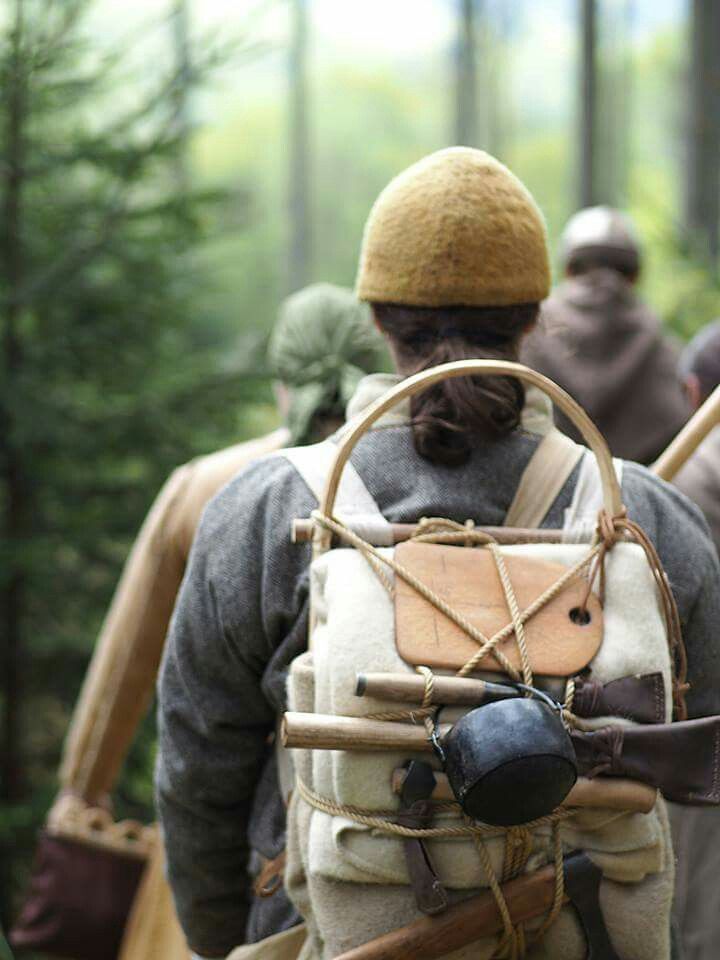 What did you do with him?" - "Updated" - "Why?" It doesn't need to be updated." nine0005
What did you do with him?" - "Updated" - "Why?" It doesn't need to be updated." nine0005
"In his work, Žmijewski constantly acts as a kind of agent provocateur, putting his heroes before difficult choices and testing the audience at the level of the binary opposition: ethical - unethical."
Nevertheless, the slightest pressure from Zhmievsky leads to Tarnava agreeing. Zmievsky said later: “The man who existed before the concentration camp ceased to exist - he changed his way of life once and for all - there is nothing to expose, his personality is destroyed. And I quoted this moment by updating his tattoo. Indeed, in a conversation, Tarnava mentions that in the camp he got used to the idea of imminent death, and he did not have a single thought of rebelling. He was just trying to get through one more day, avoiding all possible conflicts. This state never passed, and Tarnava was forever left with a newly acquired philosophy. His conformity is shown in the film - he agrees to avoid the slightest conflict, and later bitterly laments that he has updated the tattoo, "like some kind of furniture. " nine0005
" nine0005
It should be noted that in his work, Zmijewski constantly acts as a kind of agent provocateur, putting his heroes before difficult choices and testing the audience at the level of the binary opposition "ethical - unethical". He has repeatedly admitted that he wants to turn viewers into "confused recipients, frantically looking for answers but not finding them", and claimed that he sees himself as an anthropologist rather than an artist. This idea of hopelessly searching for answers among the audience is reminiscent of Alan Kaprow's ideas about turning the audience into participants in the action: using his films, Zmijewski argues that the conflicting reactions of the audience to what he sees express the real meaning of his work. nine0005
It is interesting to recall his "Repetition" of Zimbardo's Stanford experiment, in which 16 hired men played guards and prisoners in a prison modeled after Gauntanamo and Abu Ghraib. Although at first events developed in the same vein as in the original experiment, the outcome of the repetition was different. While Zimbardo, who observed the growing cruelty of the "guards", was forced to interrupt the experiment, this time the decision to stop it came from the 16 participants themselves. Thus, it turned out that the experiment was carried out not only on those who were inside the prison, but also on those who watched its development from behind the screens, and they just showed themselves not from the best side. nine0005
While Zimbardo, who observed the growing cruelty of the "guards", was forced to interrupt the experiment, this time the decision to stop it came from the 16 participants themselves. Thus, it turned out that the experiment was carried out not only on those who were inside the prison, but also on those who watched its development from behind the screens, and they just showed themselves not from the best side. nine0005
This is very reminiscent of the experiments that director Michael Haneke is engaged in, in particular with his "Funny Games", whose plotline boils down to the fact that two young people once come to a house where one family lives, and then the whole The film tortures its members for no reason, periodically turning to the camera, that is, to the public in front of the screen. The director puts the audience in the position of observers of the repetition of the Stanford experiment. If the first film still left some doubts about Haneke's true intentions, then his remake, released on American soil, completely dispels them. The second film is not just a remake of the first. It is an absolute copy of the previous one. To such an extent that if you turn on the sound from one, and the image from the other, even the articulation of the lips of the characters from one will coincide with the soundtrack from the second. Thus, both films are inextricably linked and in a certain sense represent one work, a reenactment. In it, the viewers themselves become direct participants in the experiment, whom the people on the screen also involve in the dialogue. The question that arises is: when and who should stop this experiment? And as far as the film is concerned, Haneke seems to be subtly showing the audience a mirror they should look into. nine0005
The second film is not just a remake of the first. It is an absolute copy of the previous one. To such an extent that if you turn on the sound from one, and the image from the other, even the articulation of the lips of the characters from one will coincide with the soundtrack from the second. Thus, both films are inextricably linked and in a certain sense represent one work, a reenactment. In it, the viewers themselves become direct participants in the experiment, whom the people on the screen also involve in the dialogue. The question that arises is: when and who should stop this experiment? And as far as the film is concerned, Haneke seems to be subtly showing the audience a mirror they should look into. nine0005
The associative series from here leads to a logical reasoning that the audience really should, according to Zhmievsky, frantically search for answers, at least in order not to turn into participants in an experiment that it does not even suspect. As Zmievsky said again, on another occasion, doubting everything and constantly analyzing information "protect us from manipulation, indoctrination, propaganda and other lures of the authorities.





